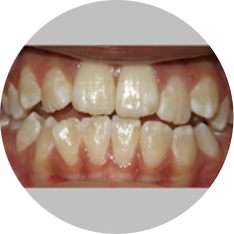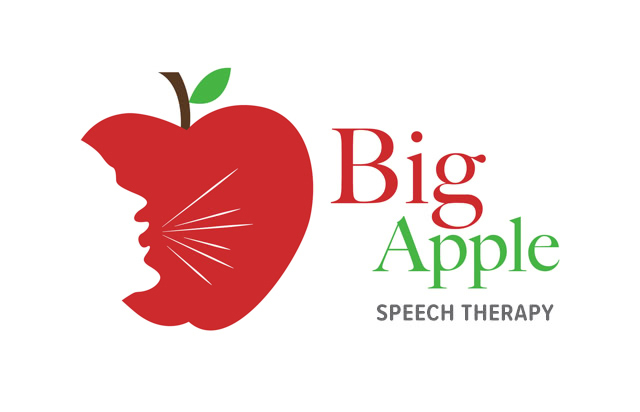Big Apple Speech has completed the certification process
with the International Association of Orofacial Myology (IAOM),
in order to provide sanctioned, evidence based, and thorough intervention.
Orofacial Myology Can Benefit:
“Tongue Thrust” / Interdental swallow / Reverse swallow aka “Myofunctional Therapy”
Elimination of Sucking habits: thumb/fingers/pacifier
Ankyloglossia/Tongue Tie
Avoiding use of dental appliances that don’t remediate tongue function
Speech sound production
Crossbites / overjets / underbites
Open mouth posture
Poor lip strength
Re-engineer tongue movement and function
Poor jaw stability
Appropriate teeth eruption
“Long Face Syndrome”
Remediation for /r/ distortions
What Does Orofacial Myofunctional Therapy Involve?
DO YOU HAVE A TONGUE THRUST?
- Do you have an open mouth posture (at rest) or mouth breathe?
- Does your tongue rest against your teeth?
- Have your teeth moved after orthodontic treatment?
- Do you have headaches often?
- Does your jaw or neck hurt often?
- Do you chew your food with your mouth open?
- Do you drool or have bloating or stomach distress after eating?
- Are you a stomach or side sleeper?
- Do you have oral habits such as nail biting, pen chewing, lip licking, or thumb sucking?
- Do you have a forward head posture?
- Do you have a lisp at times when saying the “s” sound?
- Do you feel that your tongue comes forward when you swallow?
If you selected 4 or more questions, you may need to seek the service of an Orofacial Myofunctional Therapist.
WHAT SHOULD I EXPECT IN THE THERAPY PROCESS?
A set system of painless and relatively simple exercises
Consistent daily exercises over a 3-12 month period (length of treatment varies per case)
Commitment by the patient with parental support to complete the exercises
Consistent monitoring by your Orofacial Myofunctional Therapist, as to progress and need to adjust the therapy program
Collaboration with your monitoring dental professional and referring Speech-Language Pathologist

BEFORE THERAPY

AFTER THERAPY
If you would like to chat about tongue thrust and any associated issues, please don’t hesitate to contact us at
602-791-3646 or bigapplespeech@gmail.com
The Important Difference Between
Speech Pathologists and Orofacial Myologists
Speech and language development is a mixture of physically training the mouth and tongue to produce sounds and the mental ability to know what sounds go where to create words and how to combine words into sentences.
Diagnosing a speech and language problem requires looking at both the physical and mental development and what may be wrong. After diagnosing the problem, a Speech Language Pathologist, an Orofacial Myologist, or both are needed to correct the problem. Understanding the difference between the two therapists can make a huge difference in the journey to overcome a speech or language disorder.
What Does a Speech Language Pathologist Do?
A Speech Language Pathologist (SLP) is what people typically think of when thinking of speech and language therapy.
They assist people overcome different speech and language challenges. This may include problems like:
Stuttering | Lisps | Apraxia | Autism Spectrum Disorders | Language based learning disabilities
SLPs understand how to help both children and adults with each unique speech issue through a variety of therapy techniques. These issues include basic physical, mental, cognitive, comprehension and emotional barriers to normal speech.
How is an Orofacial Myologist Different?
While SLPs focus on speech and language issues from a variety of sources, Orofacial Myologists focus on oral physical problems, especially involving the tongue, that prevent normal speech development. Orofacial Myology has been defined as “the study and treatment of oral and facial muscles as they relate to speech, dentition, chewing/bolus collection, swallowing, and overall mental and physical health” (S.R Holtzman).
With Orofacial Myofunctional disorders, the tongue lacks the coordination to motorically move to produce specific sounds, such as s, z, r, sh, ch, use correct mouth resting posture with the tongue tip up behind the teeth, or produce a correct swallowing pattern.
A trained Orofacial Myologist knows how to properly evaluate Orofacial Myofunctional Disorders and how to remediate the problem. The most common of orofacial issues is a “tongue thrust” swallow. The tongue thrust swallow is normal in infants, but as children develop, they should outgrow it and learn to swallow normally. Sometimes this isn’t the case, and this incorrect swallowing technique leads to a lack of coordination of oral muscles resulting in dental malocclusions, such as, an overbite, overjet or open bite. Common problems usually involve being unable to pronounce certain sounds because their mouth and tongue lack the proper coordination and training.
Why is This Important?
While most SLP’s have an understanding of orofacial issues, they typically aren’t properly trained to fix orofacial myofunctional disorders. This lack of understanding can lead to misdiagnosing the problem, lengthening the duration of therapy, and the therapy ending with poor results.
Becoming a certified Orofacial Myologist isn’t easy because treating orofacial issues requires large amounts of knowledge and training. Here are the steps someone has to take to become a fully certified Orofacial Myologist.
1. Become a member of the International Association of Orofacial Myology
2. Complete 28 hours of an approved course on Orofacial Myology
3. Complete an extensive examination.
4. Be observed for 6 hours of therapy and evaluation by a Certified Orofacial Myologist
5. Be reviewed by the board to determine if all criterions have been met.
If someone is diagnosed with an orofacial myofunctional disorder, like tongue thrust, an Orofacial

